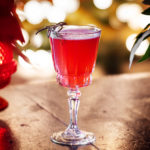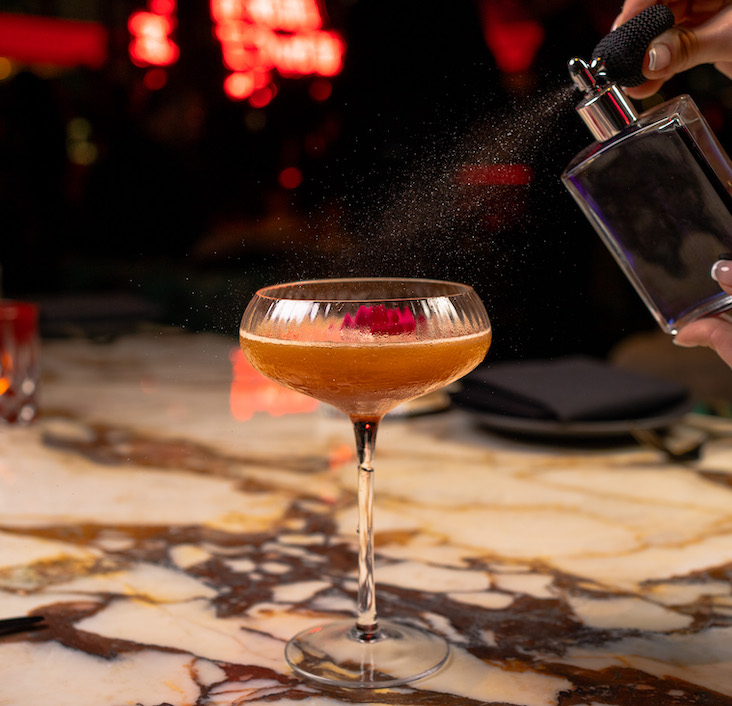When I headed up the beverage department for a restaurant group, December was always a wonderful time of year. Our restaurants were full of guests eating, drinking and celebrating, and I was always busy with research, planning and development for the coming year.
As a part of this planning process, I would spend time during the month meeting or speaking with all of the suppliers we had worked with or were considering working with in the future. I would use these conversations to glean as much information as I could about their thoughts on the state of the industry, what they thought was working and what was not and the trends they were expecting to see in the coming year.
I would ask suppliers what innovation they had in the pipeline, what marketing initiatives were planned for the coming year, and what products they were focused on. I found that any time I could align our programming with that of a supplier, it was a win/win.
As we got into the fourth quarter of this year, I started to think about these meetings and how different the answers might be this year vs. years past, and what I would do in the coming year. For one, I would keep it simple, from products to execution, and manage ordering and cash flow closely.
I would also make sure to have the tequila and whiskey categories well covered as they continue to grow. And reach out to supplier partners for help when needed—especially for training purposes.
Beverage training new staff may not be top of mind these days with so many other challenges, but keep in mind that most companies will offer general beverage training that isn’t brand specific. You want to make sure that your staff is trained up and comfortable selling those beverages for you.
I reached out to some of the top liquor companies to find out what the past year looked like for them, and what we can expect from them in 2021. Their feedback may help in planning your bar and beverage programs.
Adapting on the fly
It’s no surprise that while 2020 was a terribly challenging year for on-premise accounts, the off-premise sector was on fire for many spirits brands. Most suppliers I spoke to also confirmed that consumers were a bit price conscious throughout the year, though there was still interest in premium brands. It seemed to be the mid-tier priced spirits that faced the greatest challenges.
When it came to planning, the suppliers agreed that changes had to be made on the fly in 2020—not only for their benefit, but also so they could adapt to the changing timelines of their customers.
“Our on-premise planning calendar does look different,” says Pete Carr, regional president of North America for Bacardi. “Our advocacy team has traditionally hosted large in-person events, including some really fun ones, like the Grey Goose Great Bar Race, an obstacle-course-like event for the trade. Because of the pandemic, we’ve adjusted our approach to the trade.”
With a grassroots effort at the local level, “we will support our hospitality and bar partners at the unit level because we understand that is what they need most,” Carr says. “We all want to get together again and provide those epic experiences, but now is not the time for that. You will see Bacardi supporting the new normal with enhanced education, increased operations training, and continual reopening guidelines as we know this is an ever-changing environment.”
Dan Cohen, senior public relations director for Beam Suntory, agrees that planning looks different this year. “We have pulled back from some of our national campaigns and are executing now a bit more on the regional and local levels,” he notes. “We also have RTDs as a bigger part of our 2021 planning than we have ever had in the past.”
Campari, too, has shifted its cadence this year as it adjusts to better meet the changing timeline and demands of its on-premise customers, according to people I spoke with at the company. It also pulled back on some initiatives planned for 2020 and pushed up the timelines on others.
Heaven Hill Brands has been adjusting to the ever-changing market to support on-premise where it can, “whether that is through point-of-sale indicative of to-go cocktails or through fundraisers sponsored by our brands,” says chief marketing officer Kate Latts. “Given that some of these changes are here to stay, I think we will continue to adjust and create programs that adequately support the new landscape.”
Cocktails to-go, kits and RTDs
For certain, a great deal of thought and effort went into trying to figure out the to-go beverage category this year. Operators and brands are still trying to figure out the best methods to service this sector.
Continuing innovation involves cocktail kits, earth-friendly containers and ready-to-drink (RTD) selections. Campari promises some innovation coming in RTDs, including spins on two cocktails that are key to the business, the Negroni and the Aperol Spritz.
The ready-made cocktail category was already booming when Bacardi launched the Bacardi Real Rum Cocktails this past spring, Carr says. In fact, the category was up more that 36% vs. last year, and to date, RTDs continue to be the fastest-growing spirits category.
“We’ve already doubled our forecast for the year following a successful summer launch of our Bacardí Real Rum Ready-to-Drink Cocktails,” he says. For Bacardi, the RTD cocktails are also a way to introduce people to the rum category. “The cans are the intro, and then we find that they will branch out and expand their rum repertoire,” Carr says.
Bacardi in early November launched Twistails cocktail pods, which help consumers make bar-perfect drinks at home, a trend that grew significantly during lockdowns as people began experimenting with cooking and mixology. Users add water and ice to the Twistails shaker, attach the strainer, pick a cocktail pod and twist. The shaker yields a fresh cocktail made with Bacardi premium rum.
Beam expects continued strength and growth in the whiskey category, Cohen says, with likely additions to its portfolio of premium whiskeys, and perhaps a new flavored whiskey. Jim Beam Peach, launched last year, was the company’s best-ever flavored whiskey launch, so it wouldn’t be a surprise to see another flavor coming out.
Highballs will also remain a point of emphasis for Beam Suntory. Long a favorite in Japan, highball drinks have been growing in popularity in the U.S., as well. Some cities, such as Los Angeles, have even seen highball bars popping up.
Whether it’s a Toki Highball or one made with one of Beam’s fine bourbons, these trending, two-ingredient (a spirit plus a carbonated mixer) beverages are light, refreshing and simple to execute. Highballs also pair well with food and do an excellent job of showcasing the spirit.
The power of packaging
Much of the innovation in beverage alcohol involves packaging sizes, quantities and sustainability. For instance, Bacardi this past fall announced that it will be the first spirits company to introduce a 100% biodegradable bottle, which will be on shelf by 2023. The 100% biodegradable bottle will replace 80 million plastic bottles—3,000 tons of plastic—currently produced by Bacardi across its portfolio of brands every year.
“We’ll start with our namesake, Bacardi rum, before the plant-based material is rolled out to replace single-use plastic across our portfolio of brands,” Carr says. “Being 100% plastic free in the next 10 years is part of our ambition, and we are proud of this innovation and the road it can pave for others in the industry looking to reduce their environmental footprint.”
In a time when both consumers and businesses were watching their expenditures, Campari set out to make purchasing more affordable for both on- and off-premise customers. This includes smaller 375-ml. bottle sizes for some brands, and cutting down case sizes from 12 bottles to six in others. Plenty of bar and restaurant owners will welcome the smaller case sizes as they try to manage cash flow during the pandemic.
“This has undoubtedly been a year like no other, one that has tested everyone’s strength, resiliency and compassion,” says Bacardi’s Carr. “I’ve been so impressed by the entrepreneurial spirit of the hospitality and restaurant space, which has constantly faced new restrictions and keeps finding innovative ways to keep running, be it through to-go cocktails, new seating formats, delivery services or virtual programming.”
Some of the newfound behaviors will stick, such as buying spirits online, Carr says, which exploded as an option when lockdowns began. “People love convenience and now that they’ve learned that cocktails kits or bottles can ship right to their door, many will choose to keep that as an option, even when markets fully reopen.”
But this moment in time has also elevated the importance of connection, he adds. “I certainly miss going out to eat and enjoy a great cocktail with friends, family, and customers. I also miss talking to the bartenders, the servers, the managers—everyone who makes the experience so memorable. We believe that once people have the confidence that they can safely return, they will come back to bars and restaurants. And when those accounts are ready, we will be there to support them.”
Paul Brown is CEO of Tampa, FL- based Paul Brown Productions and the former national director of beverage for The Melting Pot/Front Burner Brands.







